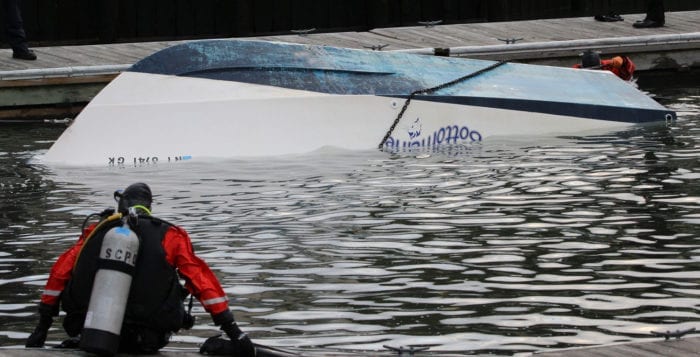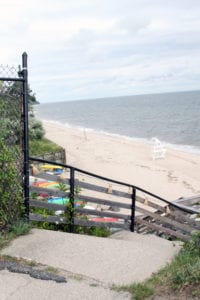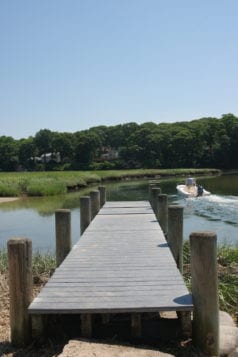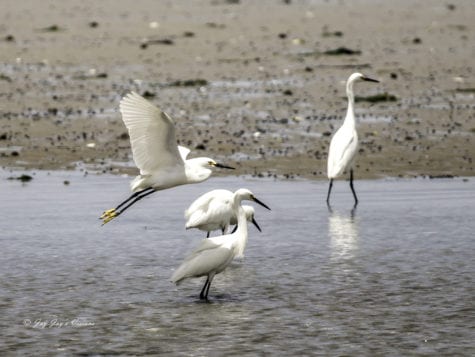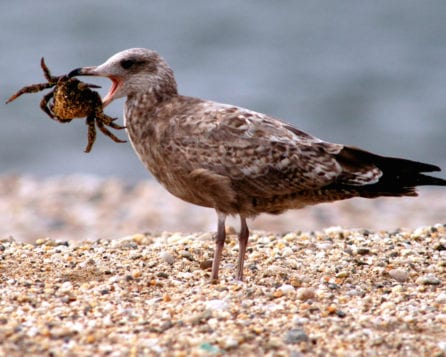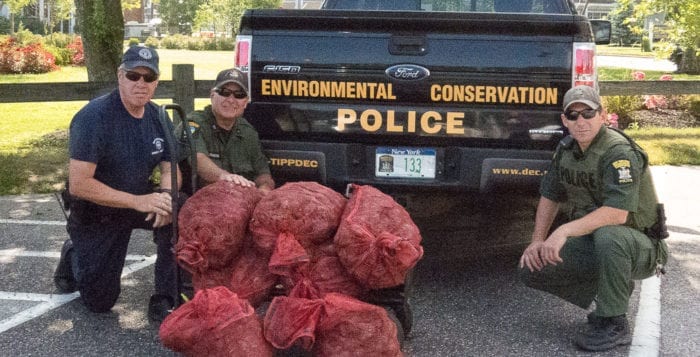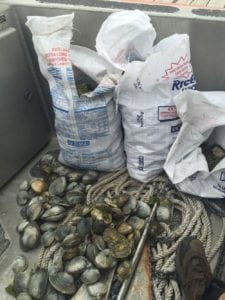The Port Jefferson school district recently installed a bed of vegetation on the roof of the high school as a way to curb its impact on Port Jefferson Harbor and the Long Island Sound by reducing and filtering stormwater, and now other municipalities and districts are taking notice.
The district’s facilities administrator Fred Koelbel spearheaded the mission to obtain a grant from the state’s Environmental Protection Fund as a part of the Department of Environmental Conservation’s Water Quality Improvement Projects program in 2016. As a result, the district received money to cover all but $68,000 of the $275,000 total cost to install a 3,400-square-foot bed of pre-grown sedum, a large perennial plant, on a portion of the school’s roof. The district also has an educational element planned for the new roof, to allow students to take a hands-on approach to tracking how much stormwater the roof helped to treat and prevent from entering the harbor and Sound.
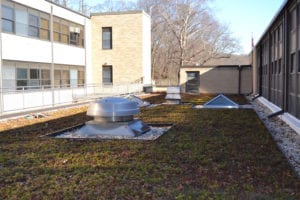
The project was overseen by Siplast, a commercial roofing manufacturer who specializes in installing green roofs in New York and across the country. John A. Grillo Architects of Port Jefferson installed the roof. Siplast’s district manager for New York Michael Balaban and field sales representative Colby Devereux were at Port Jefferson high school Jan. 26, to host an informational workshop for administrators from other school districts, members of the public, a representative from Port Jefferson’s board of trustees and building department, among others who might be interested in installing a green roof on their school, home or municipal building. Balaban said most of the company’s work has been done in New York City, and he isn’t aware of any other school district on Long Island with a green roof, currently.
The representatives from the company presented the many public and private benefits to the attendees, and held up the district as an example for what is possible if others were to follow Koelbel’s lead.
“For our kids, now this is something that we do — we made it normal,” Koelbel said to the workshop attendees.
The concept of installing green roofs in the United States began in 2005, according to Balaban, and there are numerous environmental benefits. The vegetation catches rainwater, filters it and slows down its progression through municipal drains, and thus reduces the dangerous impact stormwater can have on Long Island’s water supply. According to the presentation, green roofs also increase a building’s energy efficiency and work as insulation for noise from within a building.
With green roofs, according to the presentation, water is stored at the surface and taken by the plants, where it is returned to the atmosphere through transpiration and evaporation. Green roofs not only retain rainwater, but moderate the temperature of the water and act as natural filters for any of the water that happens to run off.
Devereux praised Koelbel’s vision and the multifaceted benefits of installing a green roof on a school. Balaban had kind words about the actual execution of the project at Port Jefferson.
“We look at a lot of roofing every day … this is just really, really, really well done,” he said. “The roofer deserves a little applause here as well.”
Bruce D’Abramo, a member of the village board of trustees and liaison to the building and planning department, attended the workshop on behalf of the village.
“The reason we brought the planning board here is so that we can encourage, especially with our redevelopment, the use of this kind of roof,” he said. He added that the village will encourage business owners to venture to the school to take a look at the roof and gain an understanding of its benefits, to possibly add vegetation when they are in need of a new roof.


